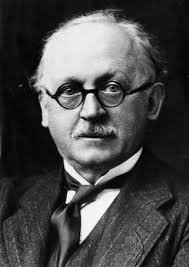The Collaboration of Gertrude Jekyll & Edwin Lutyens
A Partnership in Garden Design & Architecture that Influenced Gardens in England, Ireland, & the US
Gertrude Jekyll (1843-1932) began her career in arts and crafts: painting, embroidery, metal, carving, and interior design. She turned to gardening when her short-sightedness forced her to abandon intricate work. Jekyll worked in the Arts & Crafts style and was heavily influenced by John Ruskin (1819-1900) and William Morris (1834-1896). Her gardens are known for their herbaceous borders and hardy shrubbery with brick paths lined with lilies, lupins, delphinium, and lavender. She worked in a natural style, a contrast to the more formal bedding schemes of the 19th century.
Edwin Lutyens (1869-1944) was an English architect born to an Irish mother and trained in London. He trained in Classicism, using traditional architectural styles but updating them with his modern twist. Lutyens designed a range of monuments, from country houses to war memorials and imperial building in New Delhi, the ruling center of British India. During his life, he was hailed as the greatest British architect since Sir Christopher Wren (St. Paul’s Cathedral in London).
A CHANCE MEETING
Lutyens and Jekyll met by chance at a tea party in 1889. At the time, Jekyll was 45 and already known and admired for her work. Lutyens was just 20 and at the very start of his career. Jekyll was impressed by Lutyens’s eagerness, but she was also in need of a house: she had recently purchased a woodland plot that had a garden but no buildings.
MUNSTEAD WOOD
This first collaboration became the house at Munstead Wood, a place of pilgrimage for lovers of Lutyens and Jekyll and the Arts & Crafts style more generally. (Munstead Wood was purchased by the National Trust in 2023 and remains closed to the public as of February 2025.)
THE DREAM TEAM
In many ways theirs was an ideal collaboration. Lutyens had an architect’s eye and mastery of garden layouts and hardscaping that perfectly completed Jekyll’s knowledge of plants and artistic use of color. As the more established of the two, Jekyll brought in the contacts and the commissions. Both were frequently featured in Country Life magazine. While few of their collaborations survive, they had an enormous influence on 20th-century garden design. Of the 400+ gardens Jekyll created, 100 of them were done in collaboration with Lutyens.
HEYWOOD GARDENS & IRELAND
You’ll remember that Lutyens’s mother was Irish and from 1906 to 1918 he worked in Ireland, where Lutyens designed the Irish National Memorial Gardens in Dublin as well as country house estates.
Heywood is set in a romantic woodland setting with gardens, lakes, and architectural features. The estate was originally developed by Frederick Trench in the 1700s. Inspired by his Grand Tour of Europe, Trench moved hills, dug lakes, planted trees and placed follies. His results were considered to be the most exquisite romantic landscape of their time. In 1773 he built a house that no longer survives.
In the early 1900s, Colonel Hutchenson Poe hired Lutyens to create formal gardens around Heywood House and Jekyll landscaped them. Today Heywood Gardens is the site of two garden types: the great park created by Frederick Trench in the late 1700s and the small interlocked formal gardens created by Sir Edwin Lutyens and Gertrude Jekyll in the early 1900s. The gardens are among the best surviving example of Lutyens’ work in Ireland.




